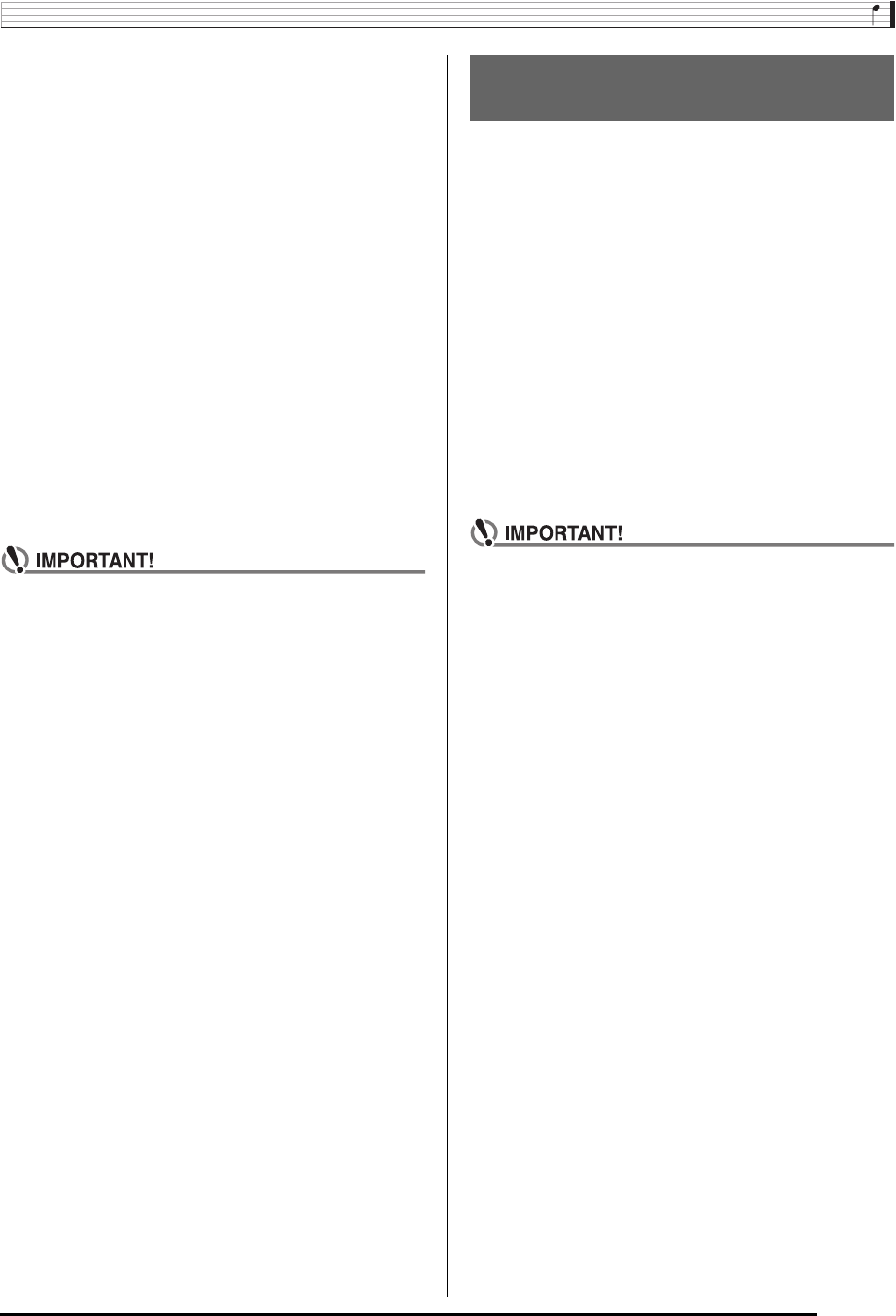
Using the Pattern Sequencer
E-113
6.
Use the R-17 (u, i) buttons to select the
instrument part you want to edit.
7.
Edit the selected accompaniment pattern
instrument part as desired.
• While performing the procedure below, you can press
the L-16 (START/STOP) button and perform repeat
playback of only the accompaniment pattern you are
editing. Each press of the L-16 (START/STOP) button
starts or stops playback.
• Performing rhythm assignment in step (1) above also
will automatically change mixer settings to the initial
defaults for the assigned rhythm. Because of this,
changing the rhythm after configuring mixer settings in
step (2) will cause the configured mixer settings to be
cleared.
• When INTRO or ENDING is selected as the
accompaniment pattern, the same rhythm is assigned
to all eight instrument parts. Because of this,
performing rhythm assignment in step (1) for an INTRO
or ENDING will change the rhythm of all instrument
parts at one time.
8.
Repeat steps 5 through 7 to edit other
accompaniment patterns and instrument parts.
9.
After editing is complete, adjust the tempo of
the rhythm as desired.
• The tempo you set here becomes the initial default
tempo.
10.
For details about how to save the final version
of the rhythm as a user rhythm, see “To store
an edited or newly created rhythm” (page
E-111).
The pattern sequencer records the keyboard, pitch bender,
and modulation operations recorded for each instrument part
as “events”. Playing a note on the keyboard, for example,
stores the following as events: note start measure, beat, and
track, note pitch, note length, and note intensity.
The following editing operations are supported for individual
events.
• Deleting events
• Inserting events
• Copying events within a specific range to a desired location
• Quantizing
*
note events
• Deleting pitch bender events
• Adjusting note event velocity values
• Adjusting note event gate time values
• Selecting the type of events that appear on the Event Editor
screen (View Select)
• Directly inputting note events (step input)
* Quantize is an operation that automatically adjusts the note
on timing of a note event to match a reference note.
• You can perform event editing on an instrument part
whose status (page E-103) is “Recorded Data” or
“Empty”. You cannot configure part parameters for an
instrument part whose status is “Fix Data”.
• Though you cannot perform event editing directly on
an instrument part whose status is “Fix Data”, you can
copy such an instrument part to a rec area and edit the
copied data. For details about the copy operation, see
“To copy preset or user rhythm instrument part data to
a rec area” (page E-119).
(1)While [RHYTHM] is displayed on the EASY EDIT
screen, specify the number of the rhythm you want to
assign to the instrument part of the selected
accompaniment pattern.
Settings are configured using the same procedures as
those for rhythm selection. Perform steps 1, 2, and 3
under “Playing an Auto Accompaniment” (page E-24).
Specifying rhythm number F:101 at this time makes it
possible to assign the rhythm data currently being
edited with the pattern sequencer.
(2)Configure the mixer settings of the selected
accompaniment pattern instrument part as desired.
• For details about mixer setting operations, see step
5 under “To edit an existing rhythm” (page E-107).
Editing Individual Events
(Event Editor)
CTK7200_e.book 113 ページ 2014年3月7日 金曜日 午後3時4分
